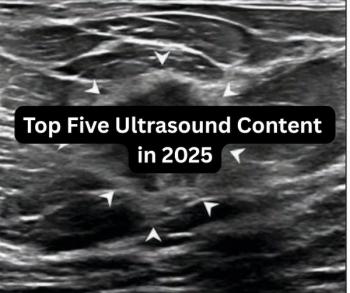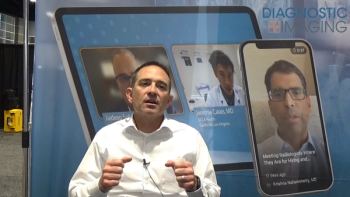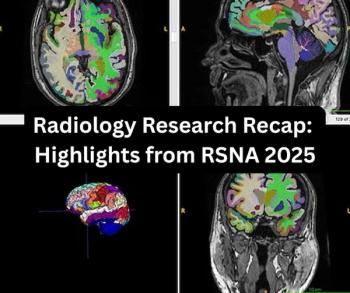New research suggests that concordance between radiologist interpretation and AI assessment of screening mammography may be associated with significantly higher risks of future breast cancer than unassisted radiologist evaluation alone.
For the retrospective study, recently published in Radiology: Artificial Intelligence, researchers compared five-year cumulative breast cancer incidence among four groups: those with concordant-positive findings by radiologists and standalone AI (Lunit Insight MMG v1.1.7.3 (Lunit)), women with concordant-negative findings, women with radiologist positive and AI negative assessments, and those with radiologist negative and AI positive evaluations. The total cohort was comprised of 82,899 women and there was a median follow-up period of 5.3 years, according to the study.
The researchers found that concordant positive findings by radiologists and standalone AI on screening mammography were associated with over a 4.5-fold higher risk of future incidental breast cancer within five years in comparison to the concordant-negative group. For the group with initial negative findings from radiologists and positive findings with AI, the researchers noted a 2.3-fold higher risk of future incidental breast cancer whereas women with initial positive radiologist assessment and negative AI evaluation had a 15 percent higher risk.
The study authors pointed out that the five-year cumulative breast cancer incidence for the concordant-positive group was the highest (37.4 per 1000 person years) of the aforementioned groups in the study with the concordant-negative group having the lowest cumulative incidence (5.9 per 1000 person years).
“Women with Concordant-Positive results had a 5-year cancer risk of 3.74%, which is above National Comprehensive Cancer Network and U.S. Preventive Services Task Force high-risk thresholds of 3%, thus indicating the need for supplemental imaging or chemoprevention. Our findings support the consideration of enhanced surveillance or risk-reducing interventions for women with Concordant-Positive results, even when the initial diagnostic work-up is negative,” wrote lead study author Eun Young Kim, M.D., Ph.D., who is affiliated with the Department of Surgery at Kangbuk Samsung Hospital in Seoul, Korea, and colleagues.
For the 1,011 new breast cancers that occurred during the follow-up period, the study authors noted that 79.6 percent were invasive breast cancer and 75.3 percent involved localized presentations. The group with concordant positive findings at initial mammography screening had the shortest interval from baseline screening to diagnosis, according to the researchers.
Three Key Takeaways
- Concordant AI–radiologist positive findings indicate high future risk. Women with concordant-positive findings on screening mammography (radiologist and AI both positive) had over a 4.5-fold higher risk of developing breast cancer within five years compared to those with concordant-negative results, with a 5-year incidence of 3.74 percent, exceeding high-risk thresholds.
- AI may detect mammographically occult or pre-malignant changes. Among women with radiologist-negative but AI-positive assessments, there was a 2.3-fold higher risk of subsequent breast cancer, particularly in those with dense breasts, suggesting AI may identify early or subtle findings missed by human readers.
- Potential role for enhanced surveillance. The study findings support consideration of supplemental imaging or chemoprevention for women with concordant-positive results, even after a negative diagnostic work-up, to mitigate elevated future cancer risk.
Among women with dense breasts, the study authors found that the 5-year cumulative incidence for women in the radiologist-negative/AI-positive group (over 19 per 1000 persons) was higher than that of the group who had initial concordant-negative findings.
“This may reflect mammographically occult cancers at the initial screening or premalignant changes detected by AI but not by radiologists,” posited Kim and colleagues.
(Editor’s note: For related content, see “Mammography Research: Can Adjunctive AI for DBT Provide Insight into Tumor Biology with Breast Cancer?,” “What a DBT Screening Study Reveals About False Positives with AI and Radiologist Assessments” and “Large Mammography Study Shows Mixed Results with AI in Breast Cancer Screening.”)
Beyond the inherent limitations of a single-center retrospective study, the authors acknowledged that the young age (mean of 43.4 years) and makeup of the cohort — entirely comprised of Korean women from a screening program with an 86.8 percent prevalence of dense breasts — limited extrapolation of the study finding to broader populations.





























